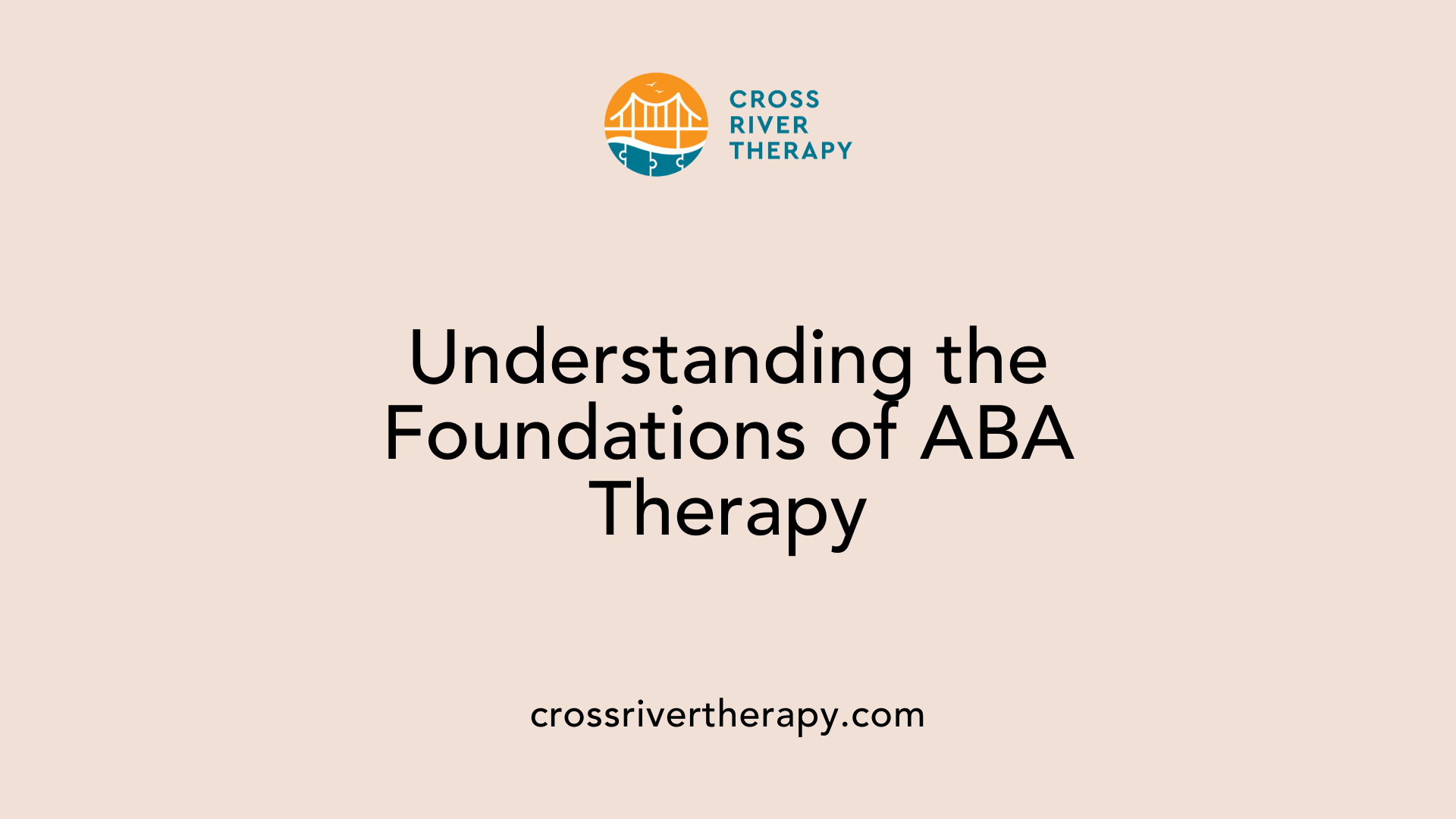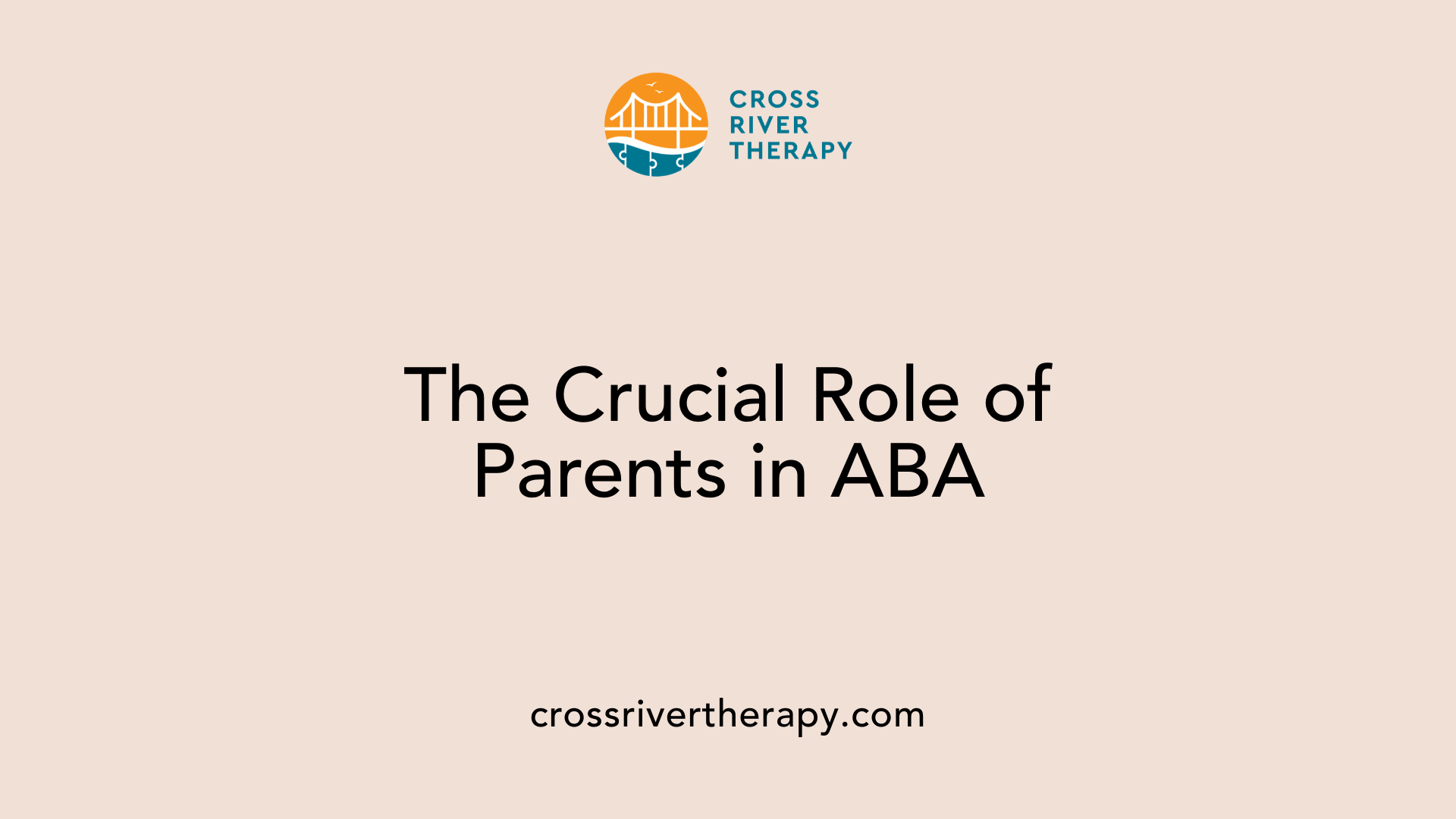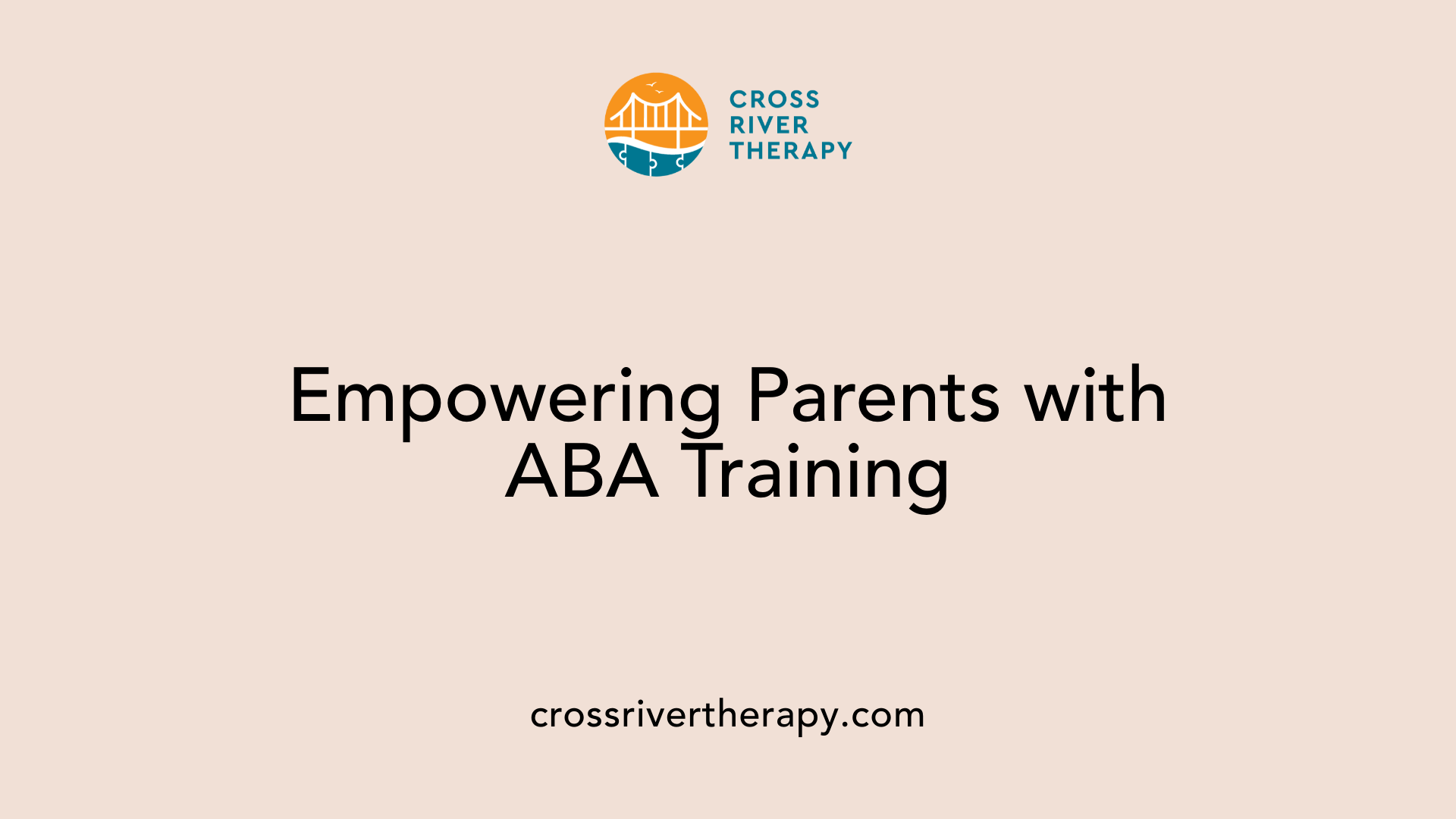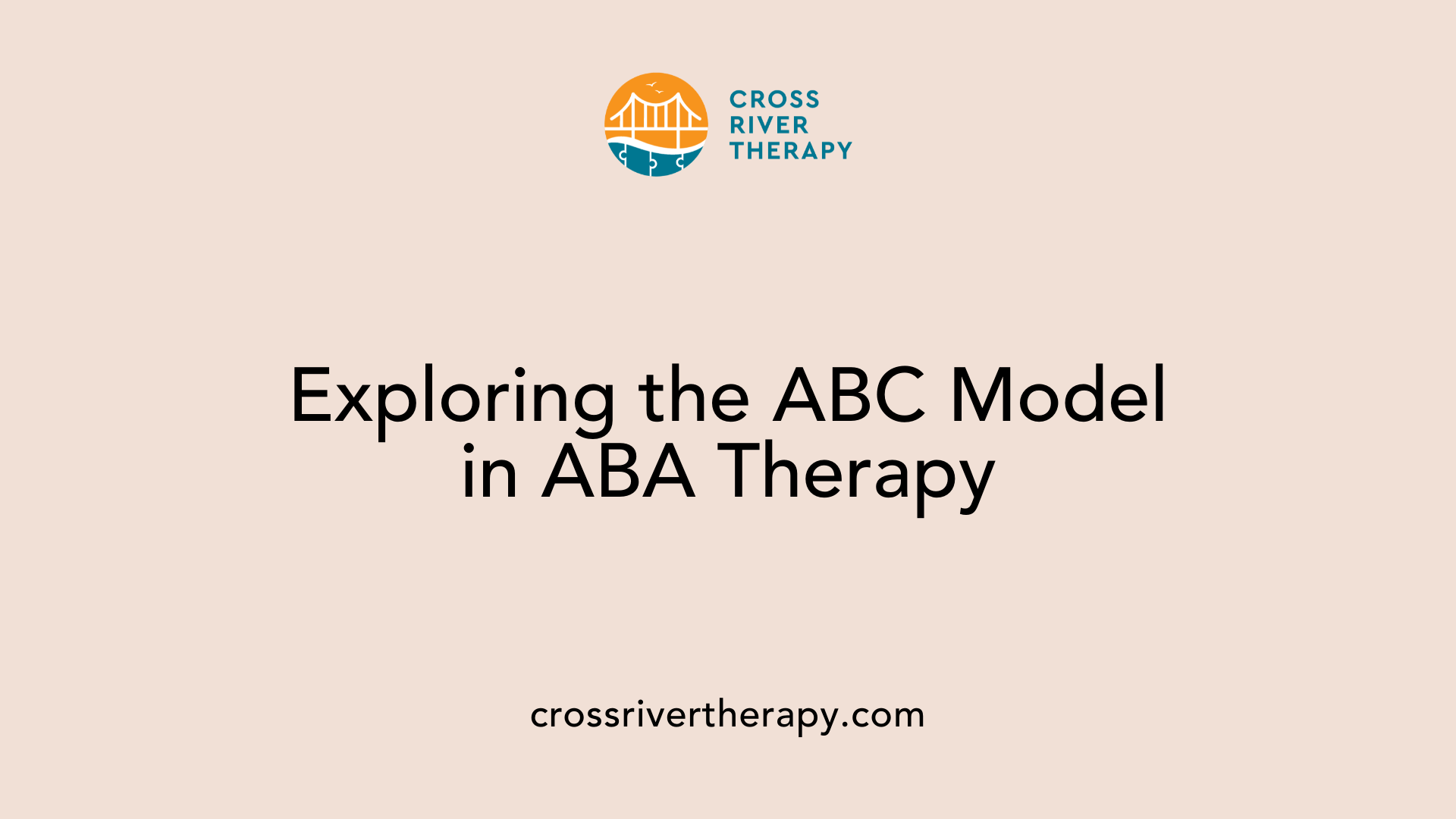The Benefits of ABA Therapy for Parents
How ABA Therapy Empowers Parents of Children with Autism
Understanding ABA Therapy and Its Impact
Applied Behavior Analysis (ABA) therapy stands as a cornerstone in the management and support of children with autism and developmental delays. Its evidence-based approaches, recognized by prominent health organizations, promise not only developmental benefits for the child but also empowerment and support for parents. This article details the principles, implementation, and advantages of ABA therapy for parents looking to enhance their child's development and better manage behavioral challenges.
What is ABA Therapy?

Definition of ABA
ABA, or Applied Behavior Analysis, is a scientifically validated therapeutic approach aimed at enhancing behaviors that are vital for children, particularly those with autism and developmental delays. It employs structured methods to increase positive behaviors while reducing undesirable ones. The therapy is tailored to each child’s unique needs, ensuring that interventions effectively support a wide range of cognitive, social, and daily living skills.
Principles of ABA
The foundations of ABA are based on key principles of behavior:
- Positive Reinforcement: This involves rewarding desired behaviors to encourage their repetition. The idea is that behaviors followed by valued rewards are likely to be repeated.
- Prompting and Shaping: ABA therapies often use prompts to assist children in learning new skills and may shape behaviors over time through gradual steps.
- Data-Driven Approaches: Parents and therapists regularly collect and analyze data on the child’s behavior to tailor interventions and assess progress, fostering ongoing adjustments that improve outcomes.
Early Identification and Intervention
Recognizing autism early is essential for effective intervention. Observing early red flags such as limited eye contact or repetitive movements can guide parents and educators to seek ABA strategies. When collaborative efforts between parents and educators occur, children can be supported more effectively in their learning and development. Evidence shows that early intervention not only improves specific skills but also enhances overall quality of life for children on the spectrum, empowering families through the use of ABA techniques.
Additional Resources
For parents seeking further information, many guides and resources explain the principles of ABA, how it operates in various settings, and strategies for effective implementation at home. Programs often include parental training to ensure that strategies are consistently applied across environments, promoting the generalization of skills learned during therapy sessions into real-life situations.
| Aspect | Description | Benefit to Child |
|---|---|---|
| Positive Reinforcement | Encourages repetition of desired behavior through rewards. | Increased frequency of good behaviors. |
| Data Collection | Systematic tracking of behavioral progress to adapt strategies efficiently. | Tailored interventions that meet individual needs. |
| Parental Involvement | Engaging parents in the therapy process enhances consistency and outcomes. | Reinforcement of learning at home leads to better skills. |
Parents as Key Participants in ABA Therapy

What do parents do during ABA therapy?
In Applied Behavior Analysis (ABA) therapy, parents serve as essential partners in their child's treatment. They actively engage in the therapy sessions alongside Board Certified Behavior Analysts (BCBAs) and therapists. This involvement includes attending sessions, providing feedback, and collaboratively developing and implementing personalized treatment plans tailored to their child's needs.
Active participation in ABA allows parents to reinforce positive behaviors at home, which is crucial for helping children learn and retain new skills. They are trained to utilize effective strategies, such as positive reinforcement and modeling, to support behavior modification efforts. Moreover, parents become lifelong learners about ABA principles, enhancing their ability to assist in their child's progress.
Parental involvement benefits
Research shows that parental involvement significantly benefits children undergoing ABA therapy. Parents who engage actively in their child's therapy experience improved communication and social skills in their children, as they consistently apply ABA strategies outside the therapy setting. This consistency reinforces learning and aids in generalizing skills across environments.
Furthermore, enhanced parental involvement leads to better family dynamics, reducing stress levels and promoting cohesion. Parents also find empowerment in advocating for their child and promoting awareness about Autism Spectrum Disorder (ASD), which can positively impact their child's social interactions with peers and professionals.
Parent-therapist collaboration
Collaboration between parents and therapists is vital for the success of ABA therapy. By sharing insights and observations, parents contribute invaluable information regarding their child’s behavior patterns and progress. This partnership helps therapists adapt interventions to better suit individual family dynamics and child needs.
Regular communication ensures that parents are equipped to handle challenges consistently and effectively. This joint effort fosters a supportive environment conducive to learning and growth, leading to improved outcomes in a child's behavior and quality of life. Collaboration not only strengthens intervention strategies but also builds trust and transparency between parents and therapists, ultimately benefiting the child's development.
ABA Training for Parents: Tools for Success

What is ABA training for parents?
ABA training for parents equips them with essential tools and strategies to effectively support their child's development, particularly for those with autism spectrum disorder (ASD). This training helps parents understand the principles of Applied Behavior Analysis (ABA), allowing them to implement behavior intervention plans, collect data, and reinforce strategies consistently at home.
Parental involvement is crucial; research shows that children achieve better outcomes when their parents actively participate in therapy. The training focuses on practical skills, including managing behaviors, creating structured routines, and enhancing communication and social skills. Overall, ABA training empowers parents to promote their child's independence and improve their quality of life.
Components of ABA training
The training consists of several key components tailored to address the unique needs of each family. Key elements include:
- Education on ABA principles: Parents learn about fundamental concepts such as positive reinforcement, prompting, and the ABC model (Antecedent-Behavior-Consequence).
- Implementation of Behavior Intervention Plans (BIPs): Parents are guided on how to create and apply these plans to target specific behaviors effectively.
- Data collection techniques: Parents are taught to track behaviors, helping in analyzing what strategies work best for their child.
Skills and strategies taught
ABA training provides parents with various skills and strategies, such as:
- Using positive reinforcement: Parents learn to reward desired behaviors, therefore encouraging their repetition.
- Modeling behaviors: Demonstrating a behavior for the child to imitate is a powerful learning tool.
- Creating routines and structure: Establishing clear expectations helps children feel secure and reduces anxiety.
Impact on child development
Research suggests that ABA training significantly affects child development.
- Enhanced communication: Parents learn to use visual supports and verbal prompts, which improve their child’s ability to express themselves.
- Improved social interactions: Strategies taught in ABA help facilitate better social connections for children.
- Better overall outcomes: With engaged parents implementing these techniques, children show improvements in independence, reduced problem behaviors, and better academic readiness.
Conclusion
Parental involvement in ABA training fosters a supportive environment that can lead to substantial improvements in a child's behavior and development.
Implementing ABA Strategies at Home

Can parents do ABA therapy at home?
Yes, parents can absolutely implement ABA therapy at home. Their involvement significantly enhances the therapy's effectiveness, allowing them to reinforce positive behaviors and maintain consistency in interventions. Creating a structured environment with well-defined routines, alongside tools like visual schedules or reinforcement systems, can make the learning process more effective for children.
How to set up home-based ABA therapy
To establish a successful home-based ABA therapy, consider the following steps:
- Create Consistent Routines: Set predictable schedules for daily activities to reduce anxiety and help children know what to expect.
- Utilize Visual Supports: Charts and diagrams can aid communication, allowing children to understand expected behaviors better.
- Implement Reinforcement Systems: Use techniques like positive reinforcement and token economies to reward desired behaviors, promoting their repetition.
Techniques parents can use
Parents can adopt several effective ABA techniques at home:
- Modeling: Demonstrate desired behaviors for children to imitate. This method encourages learning through observation, enhancing their skills.
- Positive Reinforcement: Reward and praise positive behaviors rather than punishing undesirable ones. This approach helps in encouraging good behavior.
- Shaping: Gradually reinforce closer approximations to the desired behavior, facilitating goal achievement.
- Task Analysis: Break down complex tasks (like brushing teeth or doing homework) into manageable steps for easier learning.
Communication with therapists
Maintaining clear communication with therapists is crucial. Here’s how parents can ensure cohesion between home and therapy sessions:
- Regular Updates: Share progress and challenges with your child's therapist to adjust strategies as necessary.
- Collaborative Goal Setting: Work with therapists to establish realistic goals tailored to your child’s unique needs.
- Feedback Loop: Request feedback based on your child's behavior at home to align that with professional interventions, enhancing the overall therapeutic approach.
Incorporating these strategies not only supports skill development but also establishes a comprehensive framework for successful ABA therapy implementation at home.
The ABC Model: Understanding Behavior

Antecedent-Behavior-Consequence Framework
The ABC model is a fundamental component of Applied Behavior Analysis (ABA), which provides a structured method for understanding and modifying behavior. In this framework:
- Antecedent refers to the events or conditions that precede a behavior.
- Behavior is the action or response that occurs.
- Consequence involves the outcomes that follow the behavior, which can either reinforce or discourage future repetitions of that behavior.
Practical Examples
For instance, if a child throws a toy (Behavior) after being asked to clean up (Antecedent), and as a result, they receive attention (Consequence), it may encourage them to repeat the action in the future. In contrast, if the child receives consistent praise and a reward for cleaning up their toys instead, this positive reinforcement can lead to an increase in the desired behavior.
Impact on Behavior Management
Utilizing the ABC model helps caregivers and professionals identify specific triggers of behaviors and the results of those behaviors. By systematically analyzing these elements, effective behavior management strategies can be implemented, promoting positive behaviors while reducing unwanted actions. This approach emphasizes the significance of understanding behavior within its context, leading to more effective interventions in diverse settings, including home and school.
Types of ABA Therapy and Their Applications
Discrete Trial Training (DTT)
Discrete Trial Training is a structured ABA approach that breaks skills into small, manageable tasks. Each task is presented in a clear, concise manner, involving three stages: a prompt from the teacher, the child’s response, and immediate reinforcement if the answer is correct. This method emphasizes repetition and consistency, making it effective for teaching new skills. DTT is particularly beneficial for improving communication and academic skills in children with autism.
Pivotal Response Treatment (PRT)
Pivotal Response Treatment focuses on key areas that will produce widespread improvements in a child’s development. This approach emphasizes enhancing motivation and the capacity to learn while addressing pivotal areas like social interactions and communication. PRT encourages natural learning opportunities and is largely play-based, making the therapy engaging and contextually relevant for the child.
Comparison of Methods
| Method | Focus Area | Best For |
|---|---|---|
| Discrete Trial Training | Skill acquisition through repetition | Improving specific skills or knowledge |
| Pivotal Response Treatment | Social and communication skills | Natural learning and increasing motivation |
Both methods have their unique strengths and can be chosen based on a child's specific needs. Whether using DTT for targeted skill development or PRT for enhancing social engagement, the effectiveness of these therapies underscores the adaptability of ABA in supporting children with autism.
Reinforcement Techniques in ABA
Positive vs. Negative Reinforcement
Reinforcement is fundamental in Applied Behavior Analysis (ABA) and plays a crucial role in shaping behaviors. Positive reinforcement involves providing a rewarding stimulus after a desired behavior occurs, which makes it more likely that the behavior will be repeated. For instance, if a child is praised for completing homework, they're more likely to engage in that behavior again.
On the other hand, negative reinforcement increases behavior by removing an unpleasant stimulus following the desired action. For example, if a child is allowed to leave a demanding task once they complete it, this can make them more inclined to complete similar tasks in the future.
Role of Reinforcement in Behavior Modification
In ABA, reinforcement is a powerful tool for behavior modification. The consistent application of positive reinforcement promotes the development of new, desirable behaviors while negative reinforcement can help eliminate unwanted behaviors by altering the circumstances surrounding them. Additionally, the ABC model of ABA (Antecedent, Behavior, Consequence) serves to clarify how reinforcement follows a behavior, influencing future choices.
Both types of reinforcement require careful monitoring to ensure effectiveness, as they can influence not just immediate behaviors but long-term patterns as well. By using reinforcement effectively, caregivers can foster an environment of positive behavior change in children with autism and developmental delays.
Addressing Misconceptions About ABA Therapy
Common Myths
There are several misconceptions surrounding Applied Behavior Analysis (ABA) therapy. One prevalent myth is that ABA is solely about compliance, focusing on controlling a child's behavior rather than fostering their development. In reality, ABA emphasizes teaching useful skills that promote independence and enhance the quality of life for children with autism.
Clarifying the Role of ABA
ABA is not just about changing behaviors; it fundamentally aims to improve cognitive, social, and functional skills through individualized programs. Each child receives tailored support to address their unique needs, making ABA a versatile tool in treating autism spectrum disorder (ASD). Many parents worry that ABA disregards their child's feelings, but effective ABA practice incorporates understanding and responding to emotional cues.
Current Controversies
Some debates exist regarding the methods used in ABA, including concerns about the potential for aversive techniques. However, the contemporary application of ABA strictly adheres to ethical guidelines, focusing on positive reinforcement and nurturing environments. Parents are encouraged to seek information and ask questions about the methodologies employed in services to ensure they align with their family's values and their child's well-being.
| Topic | Details | Implication |
|---|---|---|
| Common Myths | Misconception about compliance and behavior control | Misunderstanding the holistic approach of ABA |
| Clarifying ABA's Role | Focus on improving skills and independence | Supports child’s overall development |
| Current Controversies | Concerns regarding aversive techniques in practice | Importance of ethical, positive reinforcement |
Resources for ABA Training and Support
Where can parents find free ABA training materials?
Parents looking for free ABA training resources are in luck, as several organizations provide valuable learning tools. One standout option is the Autism Partnership Foundation (APF), which offers a free 40-hour Registered Behavior Technician (RBT) training program. This program adheres to the Behavior Analyst Certification Board (BACB) standards and is available indefinitely, making it a fantastic resource for both parents and providers working with children diagnosed with autism.
The APF training covers several essential topics, including:
- Clinical judgment: Understanding how to apply ABA principles effectively.
- Naturalistic teaching: Learning how to utilize daily interactions as teaching moments.
- Reinforcement strategies: Identifying and implementing methods that encourage positive behaviors.
In addition, APF provides various supplementary resources, such as online learning videos, worksheets, and quizzes. They also offer six free ABA lesson plans crafted by a Board Certified Behavior Analyst (BCBA). These resources are specifically designed to empower parents with the knowledge and skills needed for effective behavior management at home.
How can parents find ABA services and support networks?
Finding ABA services can be achieved by searching for local providers through recommended websites, contacting local autism organizations, or consulting with pediatricians who have knowledge about ABA practices. Additionally, parent support groups can offer insights and recommendations for reputable services. Online forums and community social media groups can also connect parents with others who have experiences to share, fostering a network of support and resource sharing.
Consistency in ABA: A Key to Success
Importance of Consistent Application
Consistency is crucial in Applied Behavior Analysis (ABA) therapy, as it helps children with autism understand expectations and predict outcomes. When interventions and strategies are applied uniformly across different environments—such as at home, in school, and during community activities—children can learn more effectively. This consistency fosters a sense of safety and helps children internalize learned behaviors, resulting in long-term positive behavior change.
Parents are encouraged to reinforce the same techniques taught during ABA therapy sessions. For instance, employing visual supports, such as charts, can aid children in grasping expected behaviors. Similarly, keeping to established family rules creates predictability, reducing anxiety for both children and parents.
Adapting ABA Across Settings
While consistency is vital, adaptability is equally significant. ABA strategies must be tailored to suit the varying contexts children find themselves in. For example, visual schedules might be effective at home but require adjustment for settings like school or social events. Furthermore, involving teachers and peers ensures that strategies are applied uniformly, reinforcing the behavioral goals set during therapy.
By maintaining a balanced approach—where consistent methods are adjusted for unique contexts—ABA becomes an effective tool in enhancing a child's skills and daily functioning. This holistic view empowers both parents and educators to support the child's development effectively.
Strategies for Common Behavioral Challenges
Problem-solving with ABA
Applied Behavior Analysis (ABA) offers practical solutions to common behavioral challenges faced by children with autism. By identifying specific behaviors and their underlying triggers, parents can develop targeted strategies. Using the ABC model (Antecedent, Behavior, Consequence), caregivers can analyze what happens before a behavior occurs and the outcomes that follow, aiding in the implementation of effective interventions.
Handling Transitions
Transitions can be particularly challenging for children with autism. To ease this process, ABA suggests the use of visual schedules that outline step-by-step what to expect during changes. Tools like timers can help children understand the duration of activities, promoting smoother transitions by signaling when it’s time to switch tasks. These proactive strategies reduce anxiety and enhance predictability, which benefits the child's emotional well-being.
Using Social Stories
Social stories are another powerful tool within ABA therapy. They provide a narrative that helps children understand expected behaviors in specific situations, reducing anxiety about social interactions. By visualizing scenarios, children can learn what to expect and how to respond appropriately. This not only enhances their social skills but also builds their confidence in navigating various environments, ultimately contributing to their overall development.
| Strategy | Description | Benefits |
|---|---|---|
| Problem-solving with ABA | Analyze behaviors using the ABC model | Tailored interventions |
| Handling transitions | Use visual schedules and timers | Reduced anxiety and smoother transitions |
| Using social stories | Create narratives to illustrate expected behaviors | Improved social understanding |
Long-Term Benefits of ABA for Families
Improving Quality of Life
Applied Behavior Analysis (ABA) offers significant long-term advantages for families dealing with autism. By enhancing communication, social skills, and daily living skills, families often see improved interactions both at home and in the community. Studies have demonstrated that children engaged in ABA therapy regularly exhibit better academic performance and increased independence, leading to an overall enhanced quality of life.
Empowering Family Dynamics
ABA therapy promotes an inclusive environment where parents are actively involved in their child’s development. This involvement fosters collaboration and unity among family members. As parents learn to utilize effective behavior management strategies, they cultivate a supportive atmosphere that encourages positive behavior changes. The skills acquired during ABA training empower parents to advocate effectively for their child's needs, ensuring they receive the necessary support from educators and healthcare professionals.
Building Independence in Children
A core focus of ABA is to build independence in children with autism. By teaching essential life skills and coping mechanisms through positive reinforcement, children learn to navigate daily tasks independently. Techniques such as task analysis break down complex skills into manageable steps, allowing children to experience gradual success. This process not only nurtures self-reliance but also enhances adaptive skills, further promoting independence and confidence in their abilities.
| Benefit Category | Description | Long-Term Impact |
|---|---|---|
| Quality of Life | Enhancements in communication and social interaction | Improved family relationships |
| Family Dynamics | Active collaboration in therapy | Stronger parental advocacy |
| Child Independence | Learning daily living skills and coping mechanisms | Greater self-sufficiency and confidence |
Empowering Parents Through ABA
By embracing ABA therapy, parents not only access a scientifically validated approach to improve their child's behaviors and skills but also become integral participants in their child's development journey. The consistent application of ABA strategies fosters an environment of learning and growth, ensuring children with autism can reach their fullest potential. This therapeutic collaboration empowers families, enhances quality of life, and inspires hope for a brighter future, well-equipped with the knowledge and support that ABA therapy provides.
References
- ABA Beginner's Guide for Parents - ABA Therapy for Autism
- ATN/AIR-P Parent's Guide to Applied Behavior Analysis
- ABA Training for Parents: All You Need to Know
- Helping Parents Understand Applied Behavior Analysis: Creating a ...
- What are ABA Teaching Strategies for Parents?
- Explaining Applied Behavior Analysis to Parents and Colleagues
- How to Implement Effective ABA Therapy Strategies at Home
- [PDF] ABA 101 Handouts The Autism Helper
- What is Applied Behavior Analysis?
- ABA Therapy at Home: All You Need to Know



